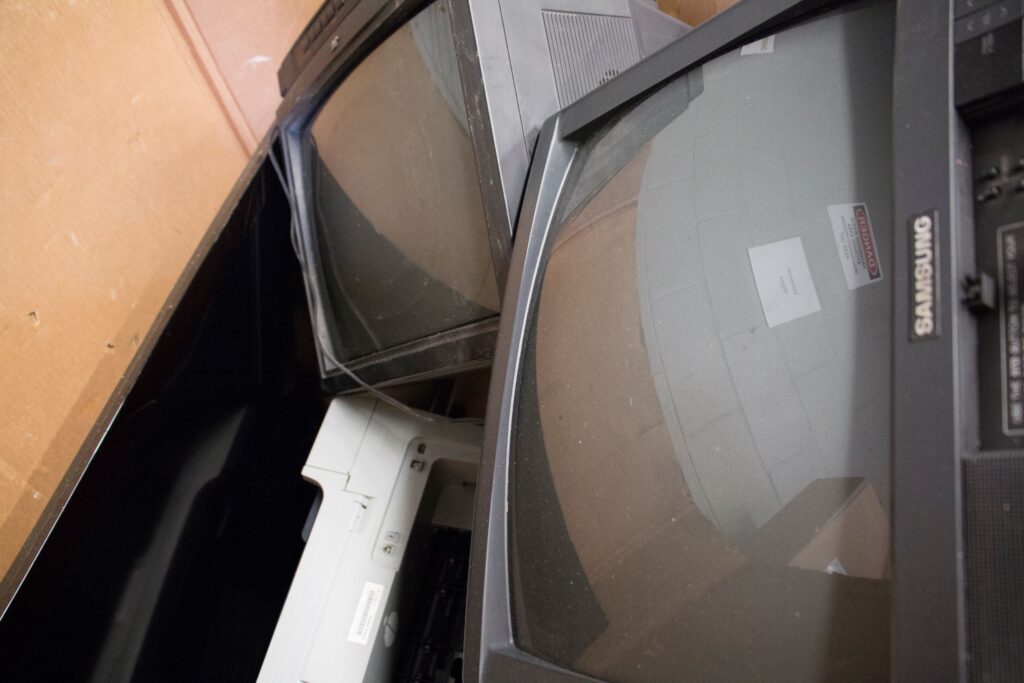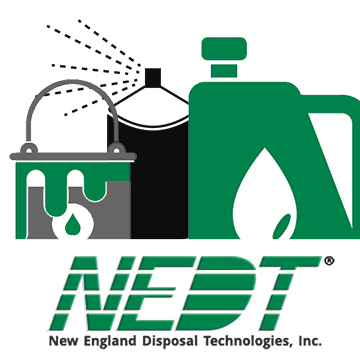While the dangers of some household hazardous waste are easy to recognize – caustic chemicals, clogging adhesives, and pressurized gases – others are less apparent. When it comes to eWaste, which are electronics that are in need of disposal, it’s hard to tell at first glance why they shouldn’t go in the trash. This blog is all about breaking down the hazards of consumer electronics, why they can’t be thrown away in the garbage can, and how to properly dispose of them.
Mercury and Other Toxic Heavy Metals
Many home electronics contain mercury and other heavy metals that are hazardous when damaged or can long-term leak out of the electronics to pollute the landfill they are thrown in. We’ve written a whole blog about mercury, but to reiterate here:
- Mercury: Mercury switches, as well as mercury present in fluorescent lighting, monitors, thermostats, thermometers, and some batteries.
- Lead: Electronics, especially older ones, may contain lead. A prime example is Cathode Ray Tube (CRT) monitors and televisions, but other products may contain lead as well.
- Other Heavy Metals: Environmentally-impactful heavy metals such as beryllium and cadmium can be present on circuit boards and other electronic wiring.
Pressure and Electrical Discharge Hazards
Both when handling and when undergoing compactionby the garbage truck, it’s important to account for hazards from breaking these electronics. The two major threats are eWaste which has glass under vacuum and is storing an electrical charge. Here are the two common products:
CRT Monitors and Televisions
As mentioned above, Cathode Ray Tube (CRT) televisions and monitors not only contain heavy metals but can contain both an electrical charge and are under vacuum pressure. The average color TV has 27,000 volts when fully charged, which can lead to an explosive implosion when combined with a break in the tube. Learn more with our blog, The Dangers of Cathode Ray Tube (CRT) Monitors and Televisions.
Cadmium and Lithium Batteries
CRT monitors aren’t the only electronic devices that hold a charge after being unplugged. Batteries, such as the lithium batteries found in many portable electronic devices like smartphones, not only maintain a charge but can react to water to start fires. Others, like Nickel-cadmium rechargeable batteries, contain hazardous metals and acids.
eWaste Disposal Options
Unable to be thrown away, you should check with your local municipality to see if they have a free eWaste program for recycling. Hauling companies might also dispose of these electronics, especially useful if you’ve got a lot of appliances to take away. If you’re in the Massachusetts area – you’re in luck! NEDT offers disposal options for eWaste through our Household Hazardous Products Collection Centers. Contact us today to learn more, find the location that works for you, or use our pick up service.



Leave a Reply